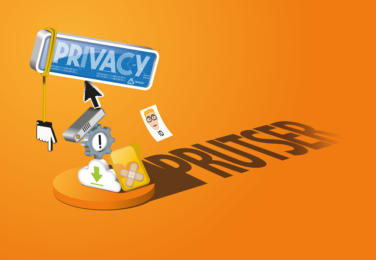Data breaches
You clicked on the wrong button by accident, and inadvertently sent a file with payment details to all of your clients. A colleague lost his USB stick. Someone came across a website that openly reveals student details. Seen something, but failed to act? In that case, it could go from bad to worse, and end up being more costly and damaging than you imagined.
Report data spilling.
Notice a data breach?
Accidentally forwarded an email with personal information? Accidentally put a list of names and addresses on the Internet? In a data breach, personal information gets lost, in the wrong hands or altered by the wrong person. Personal data are, for example, name and surname, address, BSN but also student numbers, medical data or passport photos.
Act quickly
If you see a data breach, follow these steps:
- Try to mitigate the data breach. For example, recover an email or delete a file.
- Find out as much information as possible about the data breach. How many people are involved? What kind of data was leaked? When did the data breach occur? And has the data breach been resolved, or when will the data breach be resolved?
- Report the data breach as soon as possible to your own organization or to the Personal Data Authority.
Our tips to prevent data tampering
- Enter as little personal data as possible. Always ask yourself whether it is necessary for the provision of services that an organization knows your nationality, last name or date of birth. If in doubt, don't enter.
- When forwarding an e-mail, check for sensitive data in the e-mail or attachments. Foward only the part of the e-mail that is relevant to the recipient.
- Are you sending an e-mail to a large group of people? Preferably use the BCC box: this prevents all recipients of an e-mail from being able to see each other's e-mail address.
- Delete sensitive data when you no longer need it. What you don't have, you can't accidentally leak.
- Is it necessary to share data? Store the data in a central location, and give people access to it.
- Don't send sensitive data through the mail. By doing so, you spread your data across multiple places and lose control.
- Limit the number of places where you store sensitive data. This makes it easier to handle data with care.



